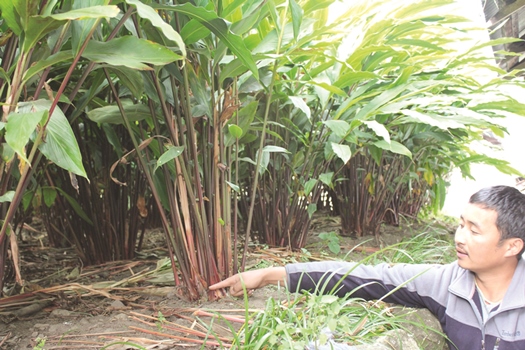Five species of Nepali cardamom recommended for registration

By Kokila Dhakal
Ilam, Dec. 11: Two hundred years after starting the cultivation of large cardamom, five domestic species of cardamom have been recommended for registration. A meeting of the Species Approval Unveiling and Registration Sub-Committee held on Monday has recommended the names of five species of cardamom for registration.
The meeting recommended registering the cardamom of Ramsai, Golsai, Dambarsai, Jirmale, and Bhalange varieties as Nepali species, said Padam Adhikari, Chief of Cardamom Development Centre. "Registration of cardamom of Nepali species will be completed once the meeting of the Seed Unveiling Committee chaired by the Agriculture Secretary approves the names," Adhikari said.
"Until now, Nepali variety was not registered despite the long history of its cultivation. Now, no one can claim that the cardamom of Nepali variety is theirs."
According to Adhikari, the cardamom of Ramsai variety is believed to have been cultivated in Nepal in 1850 BS. The cardamom, which yields 31 kg per ropani of land, is now cultivated in 6,000 hectares.
Bhalange, another species cultivated at the same height, is also cultivated especially in Pyang, Jamuna, Mabu, and Gorkhe of Ilam. Cardamom of this variety, which yields 45 kg per ropani is cultivated in 3,000 hectares of land.
Cardamom of Golsai variety has been cultivated in the eastern hills of Nepal since 1850 BS. This cardamom is cultivated from an altitude of 1,200 m to 1,600 m above sea level. The cardamom which yields 35 kg per ropani of land is being cultivated in 59,000 hectares.
Similarly, another variety of Dambarsai is also very popular among farmers. The cardamom, which was started cultivating 170 years ago at the yield rate of 35 kg per ropani, is now planted in an area of 1,500 hectares. This cardamom is also cultivated up to an altitude of 600 to 1,200 m.
Cardamom of Jirmale is grown in Rong Rural Municipality. This variety of cardamom, whose cultivation was started 150 years ago by local farmer Dhan Bahadur Sangbo, is now cultivated in 6,000 hectares of land. According to the Centre, the cardamom is grown at an altitude of 600 to 1,200 m with a yield rate of 45 kg per ropani of land.
"Seeds of species registered are kept in the gene bank. If the seed of a variety is extinct it will be safe in the gene bank," said Adhikari. “Large cardamom farming will take momentum in Nepal after the registration of Nepali variety.”
According to the Ministry of Agriculture and Livestock Development, cardamom was cultivated in 15,055 hectares of land in 54 districts of Nepal in the fiscal year 2018/19
Cardamom is used in making spices and ayurvedic medicines.
Recent News

Do not make expressions casting dout on election: EC
14 Apr, 2022
CM Bhatta says may New Year 2079 BS inspire positive thinking
14 Apr, 2022
Three new cases, 44 recoveries in 24 hours
14 Apr, 2022
689 climbers of 84 teams so far acquire permits for climbing various peaks this spring season
14 Apr, 2022
How the rising cost of living crisis is impacting Nepal
14 Apr, 2022
US military confirms an interstellar meteor collided with Earth
14 Apr, 2022
Valneva Covid vaccine approved for use in UK
14 Apr, 2022
Chair Prachanda highlights need of unity among Maoist, Communist forces
14 Apr, 2022
Ranbir Kapoor and Alia Bhatt: Bollywood toasts star couple on wedding
14 Apr, 2022
President Bhandari confers decorations (Photo Feature)
14 Apr, 2022










